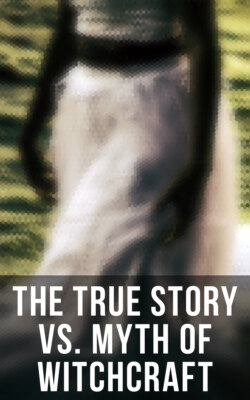Читать книгу The True Story vs. Myth of Witchcraft - William Godwin - Страница 191
На сайте Литреса книга снята с продажи.
Forman and Others.
ОглавлениеThere is a story of necromancy which unfortunately makes too prominent a figure in the history of the court and character of king James the First. Robert earl of Essex, son of queen Elizabeth’s favourite, and who afterwards became commander in chief of the parliamentary forces in the civil wars, married lady Frances Howard, a younger daughter of the earl of Suffolk, the bride and bridegroom being the one thirteen, the other fourteen years old at the time of the marriage. The relatives of the countess however, who had brought about the match, thought it most decorous to separate them for some time, and, while she remained at home with her friends, the bridegroom travelled for three or four years on the continent. The lady proved the greatest beauty of her time, but along with this had the most libertine and unprincipled dispositions.
The very circumstance that she had vowed her faith at the altar when she was not properly capable of choice, inspired into the wayward mind of the countess a repugnance to her husband. He came from the continent, replete with accomplishments; and we may conclude, from the figure he afterwards made in the most perilous times, not without a competent share of intellectual abilities. But the countess shrank from all advances on his part. He loved retirement, and woed the lady to scenes most favourable to the development of the affections: she had been bred in court, and was melancholy and repined in any other scene. So capricious was her temper, that she is said at the same time to have repelled the overtures of the accomplished and popular prince Henry, the heir to the throne.
It happened about this period that a beautiful young man, twenty years of age, and full of all martial graces, appeared on the stage. King James was singularly partial to young men who were distinguished for personal attractions. By an extraordinary accident this person, Robert Carr by name, in the midst of a court-spectacle, just when it was his cue to present a buckler with a device to the king, was thrown from his horse, and broke his leg. This was enough: James naturally became interested in the misfortune, attached himself to Carr, and even favoured him again and again with a royal visit during his cure. Presently the young man became an exclusive favourite; and no honours and graces could be obtained of the sovereign but by his interference.
This circumstance fixed the wavering mind of the countess of Essex. Voluptuous and self-willed in her disposition, she would hear of no one but Carr. But her opportunities of seeing him were both short and rare. In this emergency she applied to Mrs. Turner, a woman whose profession it was to study and to accommodate the fancies of such persons as the countess. Mrs. Turner introduced her to Dr. Forman, a noted astrologer and magician, and he, by images made of wax, and various uncouth figures and devices, undertook to procure the love of Carr to the lady. At the same time he practised against the earl, that he might become impotent, at least towards his wife. This however did not satisfy the lady; and having gone the utmost lengths towards her innamorato, she insisted on a divorce in all the forms, and a legal marriage with the youth she loved. Carr appears originally to have had good dispositions; and, while that was the case, had assiduously cultivated the friendship of Sir Thomas Overbury, one of the most promising young courtiers of the time. Sir Thomas earnestly sought to break off the intimacy of Carr with lady Essex, and told him how utterly ruinous to his reputation and prospects it would prove, if he married her. But Carr, instead of feeling how much obliged he was to Overbury for this example of disinterested friendship, went immediately and told the countess what the young man said.
From this time the destruction of Overbury was resolved on between them. He was first committed to the Tower by an arbitrary mandate of James for refusing an embassage to Russia, next sequestered from all visitors, and finally attacked with poison, which, after several abortive attempts, was at length brought to effect. Meanwhile a divorce was sued for by the countess upon an allegation of impotence; and another female was said to have been substituted in her room, to be subjected to the inspection of a jury of matrons in proof of her virginity. After a lapse of two years the murder was brought to light, the inferior criminals, Mrs. Turner and the rest, convicted and executed, and Carr, now earl of Somerset, and his countess, found guilty, but received the royal pardon. — It is proper to add, in order to give a just idea of the state of human credulity at this period, that, Forman having died at the time that his services were deemed most necessary, one Gresham first, and then a third astrologer and enchanter were brought forward, to consummate the atrocious projects of the infamous countess. It is said that she and her second husband were ultimately so thoroughly alienated from each other, that they resided for years under the same roof, with the most careful precautions that they might not by any chance come into each other’s presence. 215
